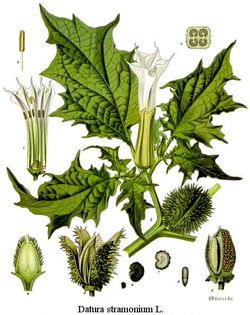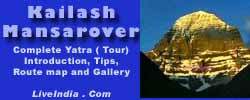| Ayurveda is the oldest surviving
complete medical system in the world. Derived from its ancient Sanskrit
roots - ‘ayus' (life) and ‘ved' (knowledge) – and offering a rich, comprehensive
outlook to a healthy life, its origins go back nearly 5000 years. To when
it was expounded and practiced by the same spiritual rishis, who laid the
foundations of the Vedic civilisation in India, by organising the fundamentals
of life into proper systems.
The main source of knowledge
in this field therefore remain the Vedas, the divine books of knowledge
they propounded, and more specifically the fourth of the series, namely
Atharvaveda that dates back to around 1000 BC. Of the few other treatises
on Ayurveda that have survived from around the same time, the most famous
are Charaka Samhita and the Sushruta Samhita which concentrate on internal
medicine and surgery respectively. The Astanga Hridayam is a more concise
compilation of earlier texts that was created about a thousand years ago.
These between them forming a greater part of the knowledge base on Ayurveda
as it is practiced today.
The art of Ayurveda had spread
around in the 6th century BC to Tibet, China, Mongolia, Korea and Sri Lanka,
carried over by the Buddhist monks travelling to those lands. Although
not much of it survives in original form, its effects can be seen in the
various new age concepts that have originated from there.
No philosophy has had greater
influence on Ayurveda than Sankhaya’s philosophy of creation and manifestation.
Which professes that behind all creation there is a state of pure existence
or awareness, which is beyond time and space, has no beginning or end,
and no qualities. Within pure existence, there arises a desire to experience
itself, which results in disequilibrium and causes the manifestation of
the primordial physical energy. And the two unite to make the "dance of
creation" come alive.
Imponderable, indescribable
and extremely subtle, this primordial energy – which and all that flows
from it existing only in pure existence – is the creative force of all
action, a source of form that has qualities. Matter and energy are so closely
related that when energy takes form, we tend to think of it in terms of
matter only. And much modified, it ultimately leads to the manifestation
of our familiar mental and physical worlds.
It also gives rise to cosmic
consciousness, which is the universal order that prevades all life. Individual
intelligence, as distinct from the everyday intellectual mind, is derived
from and is part of this consciousness. It is the inner wisdom, the part
of individuality that remains unswayed by the demands of daily life, or
by Ahamkara, the sense of `I-ness’.
A Sanskrit word with no exact
translation, Ahamkara, is a concept not quite understood by everyone as
it is often misleadingly equated to `ego’. Embracing much more than just
that, it is in essence that part of ‘me’ which knows which parts of the
universal creation are ‘me’. Since ‘I’ am not separate from the universal
consciousness, but ‘I’ has an identity that differentiates and defines
the boundaries of `me’. All creations therefore have Ahamkara, not just
human beings.
There arises from Ahamkara
a two-fold creation. The first is Satwa, the subjective world, which is
able to perceive and manipulate matter. It comprises the subtle body (the
mind), the capacity of the five sense organs to hear, feel, see, taste
and smell, and for the five organs of action to speak, grasp, move, procreate
and excrete. The mind and the subtle organs providing the bridge between
the body, the Ahamkara and the inner wisdom, which three together is considered
the essential nature of humans.
The second is Tamas, the
objective world of the five elements of sound, touch, vision, taste and
smell – the five subtle elements that give rise to the dense elements of
ether or space, air, fire, water and the earth – from which all matter
of the physical world is derived. And it is Rajas, the force or the energy
of movement, which brings together parts of these two worlds. |
 |



















